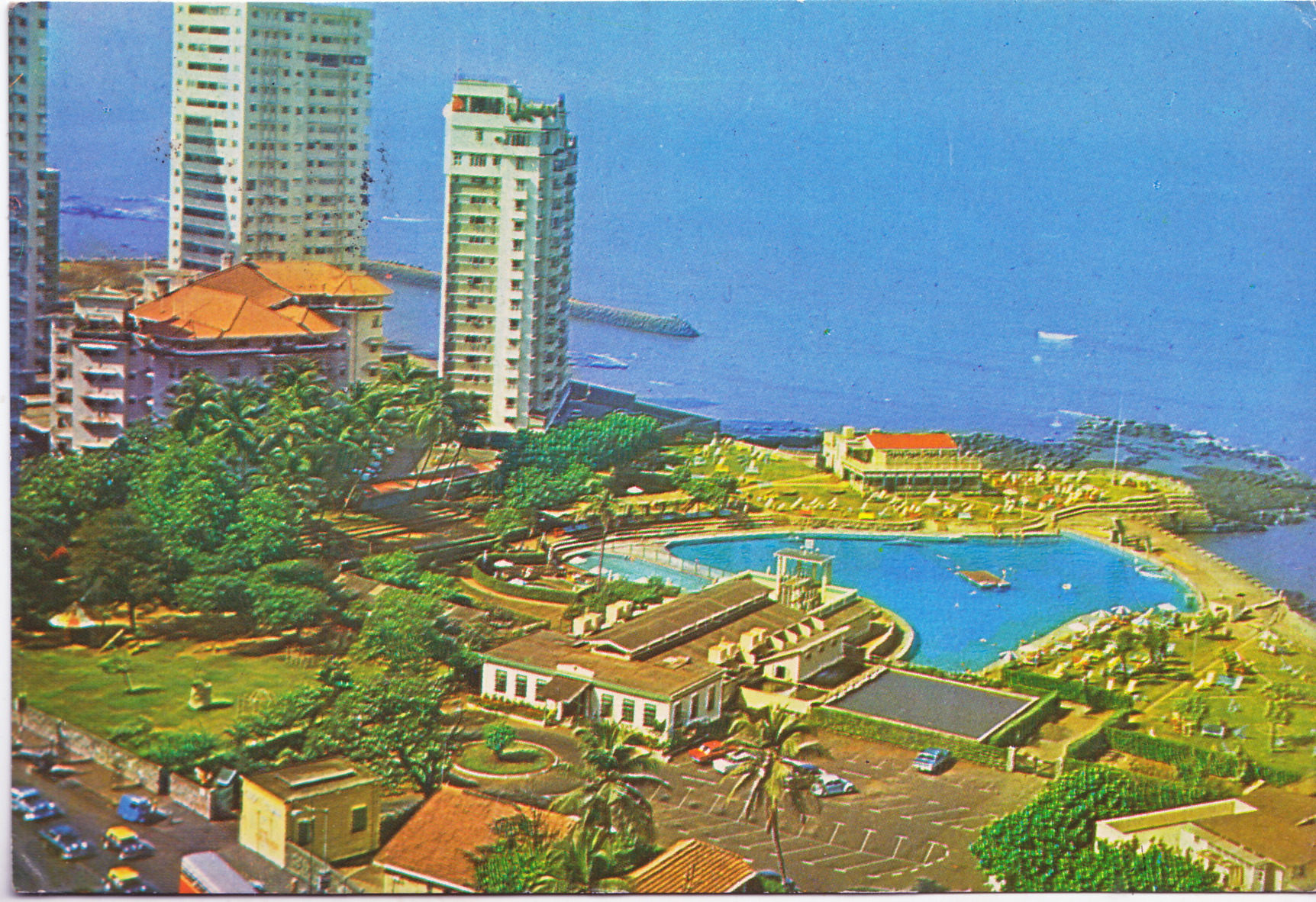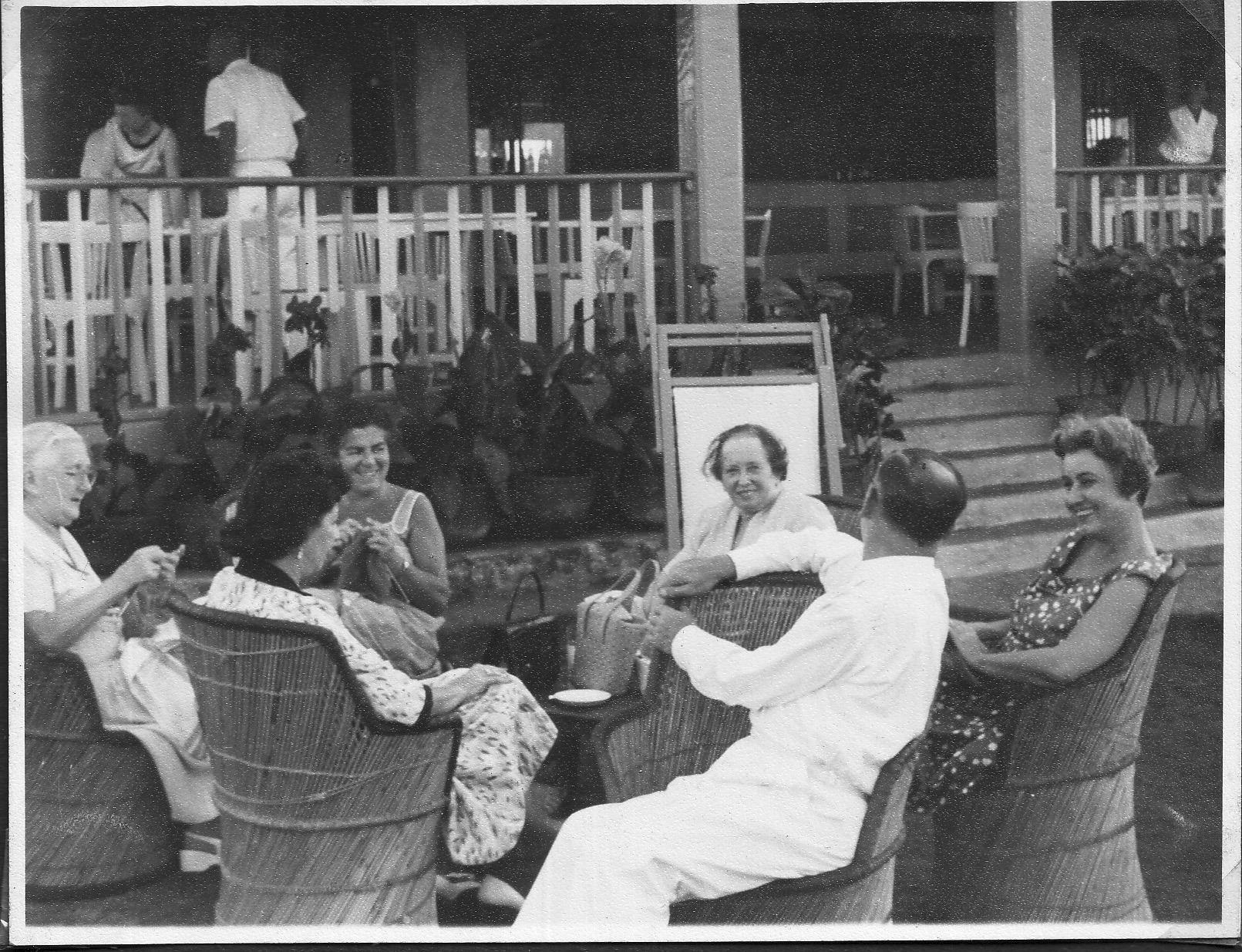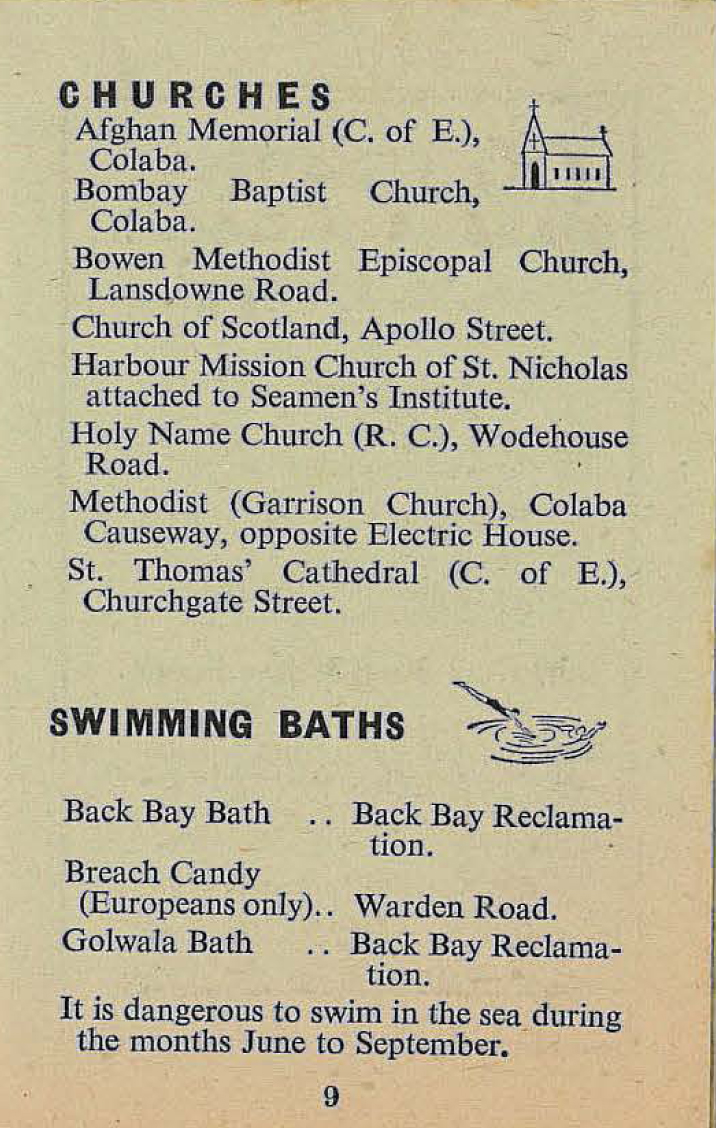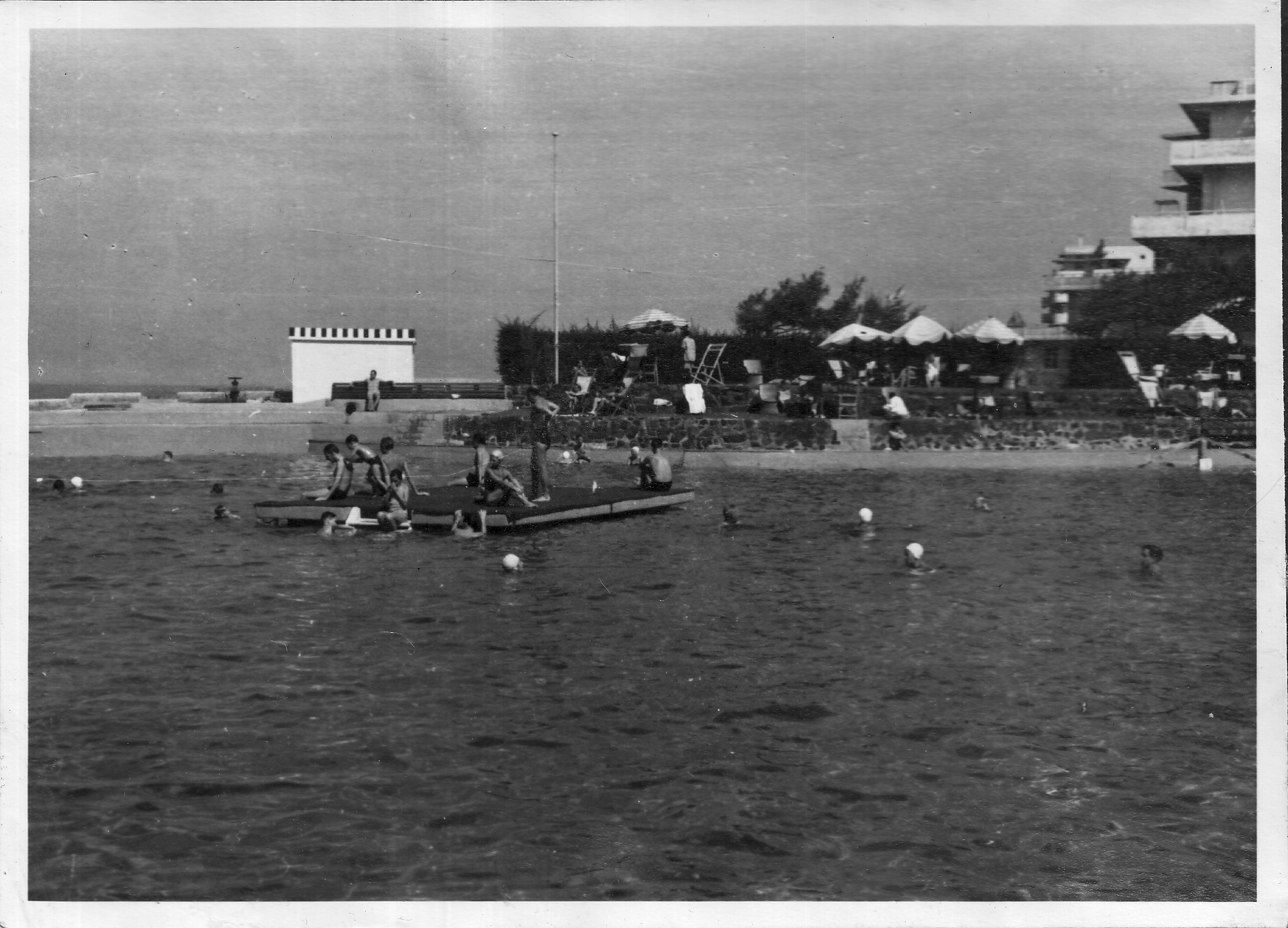Archive
Breach Candy Club
- Breach Candy Club
Breach Candy Swimming Bath Trust
- Club
The Breach Candy Club, restricted to “Europeans”, was a favourite spot for the exiled financial elite with its saltwater pool shaped like the map of British India and sea view.
Word Count: 30
66, Warden Road, Breach Candy, Malabar Hill, Bombay
(now 66, Bhulabhai Desai Marg, Breach Candy, Malabar Hill, Mumbai).
Historic aerial postcard view of Breach Candy Club with pool shaped like the map of British India, n.d. (© Private Archive Margit Franz, Sinabelkirchen). 
Friends in exile gather at the Breach Candy Club. Edith Brett (2nd left, with her back to the camera), Kamilla Thenen (3rd right), Lutz Weingarten (2nd right, with his back to the camera), Käthe Langhammer (far right), 1940s (© Private Archive Noemi Cohen-Weingarten, London). 
Page from a Bombay travel guide during World War II lists the various swimming facilities (© Governor of Bombay. Welcome to Bombay. V… for victory. Government House, n.d., p. 9). 
The Breach Candy swimming pool with a sea view, n.d. (© Private Archive Noemi Cohen-Weingarten, London). 
The famous saltwater pool shaped like the map of British India; Clubhouse with restaurant and garden in the background, n.d. (© Private Archive Noemi Cohen-Weingarten, London). Anonymous. “Byculla.” Mumbai Pages, n.d., theory.tifr.res.in/bombay/physical/geo/bycullah.html. Accessed 8 March 2021.
Anonymous. “Pran Sukhlal Mafatlal Hindu Swimming Bath and Boat Club (Mumbai).” Wikimapia, wikimapia.org/624689/Pran-Sukhlal-Mafatlal-Hindu-Swimming-Bath-and-Boat-Club. Accessed 8 March 2021.
Cohen, Noemi. “E-mails.” Received by Margit Franz, 10 March 2021.
The Cricket Club of India. “History.” The Cricket Club of India, www.thecricketclubofindia.com/history. Accessed 8 March 2021.
Dwivedi, Sharada, and Rahul Mehrotra. Bombay: The Cities Within. Eminence Designs PVT, 2001.
Franz, Margit. Gateway India: Deutschsprachiges Exil in Indien zwischen britischer Kolonialherrschaft, Maharadschas und Gandhi. CLIO 2015.
Governor of Bombay. “Welcome to Bombay. V… for Victory.” (Government House, n.d.).
Memon, Ayaz. “Twenty million people, just a handful of pools.” Hindustan Times, 6 May 2012, www.hindustantimes.com/india/twenty-million-people-just-a-handful-of-pools/story-yiCgVa0NjaToQBqZBWxuLM.html. Accessed 8 March 2021.
Rushdie, Salman. Midnight's Children. Cape, 1981.
Sathyanarayanan, Divya, and Vijaya Rathore. “Pay 1.12 crore to join Mumbai's oldest club, the Breach Candy Club.” The Economic Times of India, 2 July 2013, economictimes.indiatimes.com/pay-1-12-crore-to-join-mumbais-oldest-club-the-breach-candy-club/articleshow/20867898.cms. Accessed 8 March 2021.
Subramanian, Samanth. “Breach Candy.” India. Another Way of Seeing, special issue of Granta, vol. 130, Winter 2015, pp. 147–168, granta.com/breach-candy/. Accessed 29 March 2021.
Word Count: 180
Archival records from a series of personal interviews between the author and Carol Ross, Nere (France), 20–24 August 2010.
Archival records from a personal interview between the author and Noemi Cohen-Weingarten, Brighton (UK), 1 December 2007.
Private Archive Joe Schimmel, Cape Town.
Private Archive Margit Franz, Sinabelkirchen.
Private Archive Noemi Cohen-Weingarten, London.Word Count: 48
- 1878
- Bombay
- Margit Franz. "Breach Candy Club." METROMOD Archive, 2021, https://archive.metromod.net/viewer.p/69/2951/object/5145-11951976, last modified: 14-09-2021.
-
Schimmel’s Wedding Film 1948FilmBombay
The film shows Schimmel’s Jewish wedding ceremony at the prestigious Glamis Villa, followed by lunch at the Taj Mahal Hotel. Among the guests were Käthe and Walter Langhammer.
Word Count: 30
Baumgartner’s BombayBookBombayThe novel Baumgartner’s Bombay provides an opposite picture to that of the successful refugee in Bombay. Anita Desai’s fiction depicts poverty and failure in Indian exile.
Word Count: 28
Open Studio Evenings by Käthe and Walter LanghammerSalonBombayThe painter Walter Langhammer and his wife Käthe built an informal infrastructure to promote local avant-garde artists and regularly invited them to Open Studio Evenings at their studio.
Word Count: 29